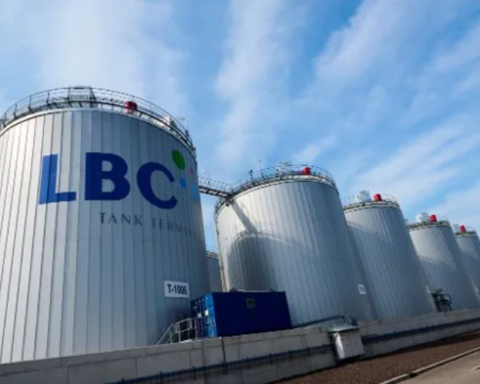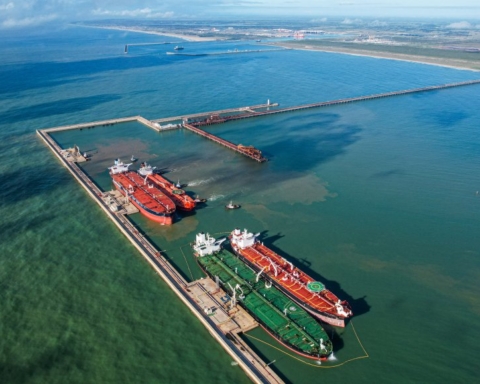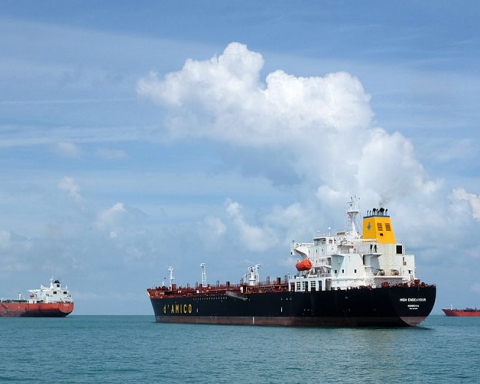The cost of bunkers is growing and shippers, i.e., shipping company clients, could soon pay the consequences, according to the Sea-Intelligence consulting firm. In its Sunday Spotlight, it forecasts a possible increase in tariffs for transport services, necessary, according to many companies, to compensate for the increase in the cost of crude oil and low-sulphur fuel, which has risen to almost $700 per tonne.
In fact, temporary emergency bunker surcharges are now calculated not on the basis of the price of traditional fuel but on the cost of Very Sulphur Low Bunker, the only fuel that liners can use to comply with the 0.5% sulphur content cap introduced by the IMO in January 2020.
As Sea Int. CEO Alan Murphy points out, however, the growing gap between low-sulfur and conventional (IFO380) bunkers is turning into a competitive advantage for companies that have invested most in scrubbers over the last few years.
In fact, the IMO regulation allows big carriers to continue to use traditional bunkers as long as they equip their vessels with modern flue gas cleaning systems..
“According to Clarkson Research’s assessments, in 2021 super tankers (VLCCs) that did not resort to scrubbers and therefore have to use the low-sulfur, more expensive bunker fuel, have been earning an average of $3,000 per day while sailing. On the other hand, operators who invested in scrubbers, using the old, less expensive high-sulfur bunker fuel, having been making considerably more, around $8,000 per day,” Ennio Palmesino, a broker with more than four decades’ experience in the industry, tells Port News.
“Similarly,” adds Palmesino, “the Suezmaxes without scrubbers had to settle for $7,000/day, while those with scrubbers took home an average of $10,000/day. Aframax did even better, earning from $8,000/day without scrubbers to $11,000 with scrubbers. Finally, product carriers totaled between $6,000 (without scrubbers) and $9,000 (with scrubbers).”
According to the broker, and adjunct professor of Geography, Commodity trading and Geopolitics, it’s all about loss-making freight rates after a 2020 that had been significantly better for shipowners. “In the first half of 2020, it was not only consumption that collapsed but also the price of oil. As on-shore storage facilities became saturated, the hunt for cheap black gold actually ended up fueling the race to charter tankers to store products at sea, thus contributing to the skyrocketing freight rates. When, in autumn, with a timid seasonal recovery, the price of the barrel went back up, the storage facilities were emptied and the ships were free to sail again, it led to a drop in freight rates, which then lasted throughout 2021”.
The problem is that in 2021, consumption is nowhere near back to pre-pandemic levels: “Global consumption is only expected to return to around 100 million barrels/day during 2022. So last year, the global fleet, designed for a consumption of 100 million bbls/day and more, has always been in excess of the volumes it transported.”
But what are the short-term forecasts? “First of all, the barrel, due to purely financial dynamics, and certainly not to physical demand, is back above $86 a barrel. This certainly does not encourage consumption. So it might take some time to get back to the psychological threshold of 100 million bbls/day.”
In the long term, however, some important factors will have to be taken into consideration: “According to some analysts” – says Mr. Palmesino – “ecological pressure will have a significant impact on the reduced oil consumption, helping to keep maritime freight rates low. Again, for environmental reasons, however, many shipowners may be tempted by the idea of getting rid of their older vessels which do not comply with IMO rules. The reduction of the existing fleet could therefore compensate for the constant decrease in consumption, generating new stability.”
Translation by Giles Foster




